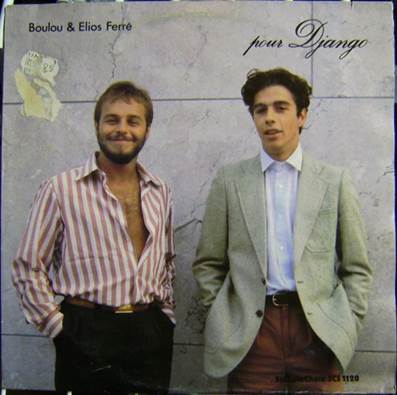DjangoBooks.com
Welcome to our Community!
Categories
- 20K All Categories
- 1.1K General
- 476 Welcome
- 59 Archtop Eddy's Corner
- 146 CD, DVD, and Concert Reviews
- 384 FAQ
- 26 Gypsy Jazz Italia
- 26 Photos
- 202 Gypsy Picking
- 21 Unaccompanied Django
- 15 Pearl Django Play-Along Vol.1
- 17 Gypsy Fire
- 45 Gypsy Rhythm
- 1.4K Gypsy Jazz University - Get Educated
- 130 Gypsy Jazz 101
- 224 Repertoire
- 218 History
- 707 Technique
- 51 Licks and Patterns
- 6 Daniel Givone Manouche Guitare Method Users Group
- 20 Eddie Lang Club
- 1.3K Gypsy Jazz Gear
- 801 Guitars, Strings, Picks, Amps, Pickups and Other Accessories
- 457 Classifieds
- 49 Recording
- 62 Other Instruments
- 18 Violin
- 5 Mandolin
- 22 Accordion
- 7 Bass
- 10 Woodwinds
- 347 Gypsy Jazz Events
- 143 North America
- 109 Europe
- 95 International
In this Discussion
Who's Online (0)
The Great Gypsy Jazz Debate in the Wake of the 1970s
 DjangoBooks
Seattle✭✭✭ All of them!
DjangoBooks
Seattle✭✭✭ All of them!
 The Great Gypsy Jazz Debate in the Wake of the 1970s
The Great Gypsy Jazz Debate in the Wake of the 1970s
This project will focus on the guitar style initiated by Django Reinhardt that came to define Gypsy Jazz. This specifically entails technical aspects of performance such as rest-stroke picking, rhythmical aspects and other idioms of the guitar itself. I will demonstrate that these are the only substantial musical differences between Gypsy Jazz and Reinhardt’s American Contemporaries, and that the main differences involve instrumentation and consequently the idioms of the guitar. During the 1970s, Jazz Fusion and Free Improvisation were emerging in America, but this was also the case with Gypsy Jazz music.











Comments
www.denischang.com
www.dc-musicschool.com
Just as a detail I'd like to point out that Joe Pass used a similar technique to what we now know as Gypsy Picking and definitely not straight alternate picking (Example 4).
From The Joe Pass Guitar Method:
"In my own playing I use alternate picking generally. When I shift from string to string I use down-picking regardless of whether I am shifting to lower or higher strings"
He's obviously not speaking of alternate picking as we know it today, seems more like a description of pick directions in GP.
Whether he used rest strokes or not I don't know...
Anyway, as I said at the beginning it's just a small detail. I think it's a very well written paper. Congrats!
I also love the modern fact that reinhardt having absorbed American influences through recorded music[ as you mostly do in the modern world} more so than live jazz music..then inturn influenced an entire legion of American guitarists{ Oscar Moore, Jimmy Bryant, Les paul, george barnes, etc..even wes Montgomery with his single string to octave to chordal approaches within a solo which is quite typical of a django solo... Its undeniable that Django is a BIG subject with lots of wellsprings of idea beyond and around music . And all that coming out from a little egg shaped hole in a guitar.